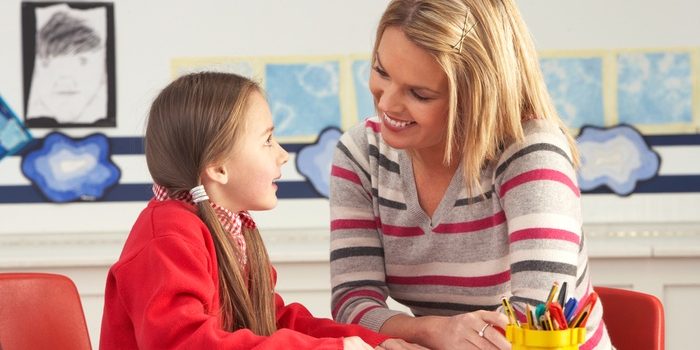by Brisbane Tutor Justin Clark
All Children Learn by Making Meaning from Text
What does this mean for dyslexic children?
Learning to read is about making meaning from the text. If we are not deriving meaning from what we are reading, then the process of learning to read becomes that much harder as we become disengaged. This is a problem for students with dyslexia who need to devote much of their time during reading to decoding individual words. As a result, the time spent decoding subtracts from their ability to make sense of what they’re reading. This in turn impacts upon any enjoyment they might receive from the reading process. The goal here is to foster greater automatic word recognition which in turn leads to increased comprehension and engagement, along with discovering the joy of reading. However, how can this be achieved?
Phonics and Dyslexia
One of the most important techniques for helping students with dyslexia is phonemic awareness. This is the insight that every spoken word is a sequence of little speech sounds represented by letters. Like the traditional phonics first curriculum, the phonemic awareness approach depends on direct instruction. However, unlike the traditional phonics first approach, the lessons delivered through direct and systemic instruction are intended not as targets of memorisation via rote learning for example, but instead as examples that the children are expected to transfer and extend to their own reading and writing. The phonemic awareness approach is intended to promote growth in word recognition and spelling. This is done not through flashcards or memorisation drills but through thinking, understanding and doing.
Phonemic awareness strategies can often be overlooked in the early years, which can have a substantial impact on children with dyslexia who have been in school for three or four years and have not had a proper intervention. Phonics is often the key for dyslexic children.
Signs of Dyslexia in Children
Students with dyslexia will show two obvious difficulties when asked to read books at their year level. Firstly, they will not be able to recognise as high a proportion of the words in the text as fluently as average readers. As a result, there will be many words they stumble on, guess, or use substitutions in the place of unfamiliar words. These attempts to identify unfamiliar words will result in many errors.
The second sign of dyslexia in children is that they will not be efficient in using phonological clues in combination with context to identify unknown words. As a result, many of these children can suffer from a lack of motivation when it comes to reading and many use compensation strategies.
Phonology Work and Dyslexia
An important consideration here is to be careful of focusing solely on letter-sound relationships as we want students to understand that spelling represents meaning and that meaning determines how the pattern of speech sounds called phonology work. That’s why we would also use morphemes as well which are the smallest grammatical units that have meaning. Examples of combining the two is when we’re teaching the phoneme ‘ch’. We can combine it with morphemes by using the suffix ‘in’ to make ‘chin’. Further exploration can be down by forming other combinations with the ‘ch’ phomeme with suffixes.
Another technique is to build on the above by using picture books to teach phonics to children with dyslexia. Using the above example of the phoneme ‘ch’, we would choose a suitable book that reinforces what they have learned by looking at the sound-letter relationships in context. This last part is crucial as a clear intention of the curriculum is that teachers provide meaningful literacy learning experiences and activities, not giving young students isolated words out of context and also nonsense words. Therefore, using the ‘ch’ phoneme we could use the picture book ‘Chicka Chicka Boom Boom’ by Bill Martin Jr & John Archambault. This is a perfect choice for learning sound-letter relationships in context. A record can then be kept of the learning that has been done of sound-letter relationships and the list of picture story books for teaching consonants and vowels. We can also use the student’s own experiences in linking them with the stories they are reading as well.
Understanding your Dyslexic Child
Another important consideration is remaining patient with your student or child and to remember that they’re not deliberately being difficult or sabotaging your efforts. Having an increased awareness of dyslexia and the difficulty that students with dyslexia face, can help us build a greater appreciation of the hurdles they have to cross and the efforts they are making.
Focus on their Interests
It’s also important to be mindful of what individual students find enjoyable to read. If we’re pushing our own interests onto a student who may not enjoy reading that type of genre or reading material, then we can turn them away from reading. Similarly, the same can happen if we’re discouraging them from reading a certain genre.
An example of this is students that enjoy reading comics. If we have a mindset that reading comics is only for ‘younger’ students and not teenagers or adults, then we’re not listening or appreciating the reasons why a student might find this enjoyable. Many students identify with the archetypes found in comics and they also find the material easier to read due to the comic strip format. Not only is it more visual with the number of illustrations, but it highlights social turn-taking as well. The ‘bubble’ and ‘cloud’ speech format of comics also aids in comprehension too. Another feature is that because students with dyslexia aren’t overwhelmed by the amount of print, there is a greater chance of comprehending the story which leads to greater enjoyment. As a result, comics can be a useful medium for those students who struggle with conventional print stories, inference and drawing meaning from text.
Phonics and Dyslexia
Finally, it’s worth noting that some school interventions with student’s with dyslexia difficulties can be characterised as stabilising their degree of reading failure rather than improving or normalising their reading skills. This can be due to a number of factors such as funding and the degree of expertise of specialists within the school. However, children with dyslexia deserve the best possible teaching practices and expertise and this includes phonics to assist them over the barriers that they encounter. We want them to derive meaning from what they are reading along with experiencing the joy of reading as well.
This blog was written by Justin Clark who specialises in tutoring students with dyslexia and other learning difficulties. Justin is a qualified Queensland teacher who is now a home tutor in Brisbane.

Justin Clark, Private Brisbane Tutor


